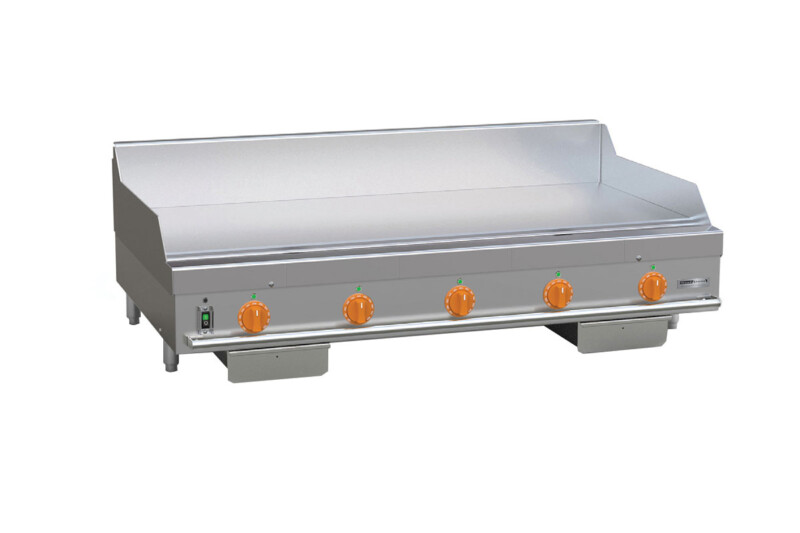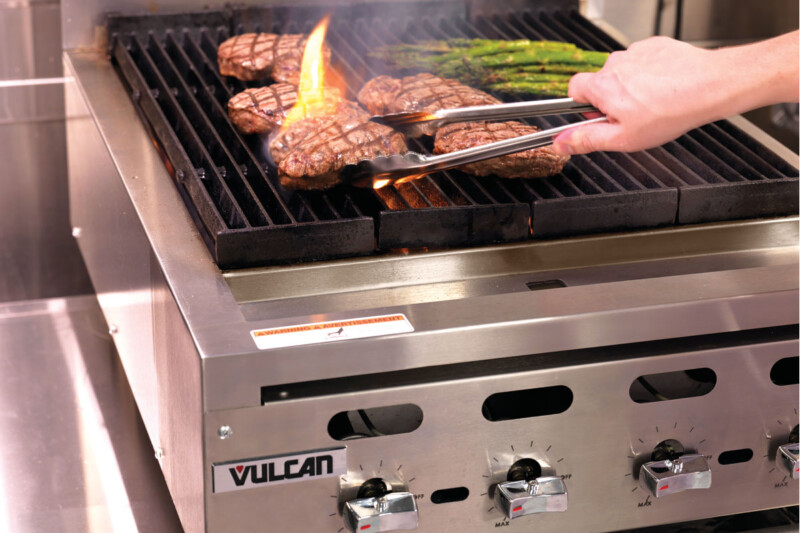Taking Stock of Today’s Ranges
Manufacturers of ranges respond to operators' modular and eco-conscious appetites while also improving ease of use.
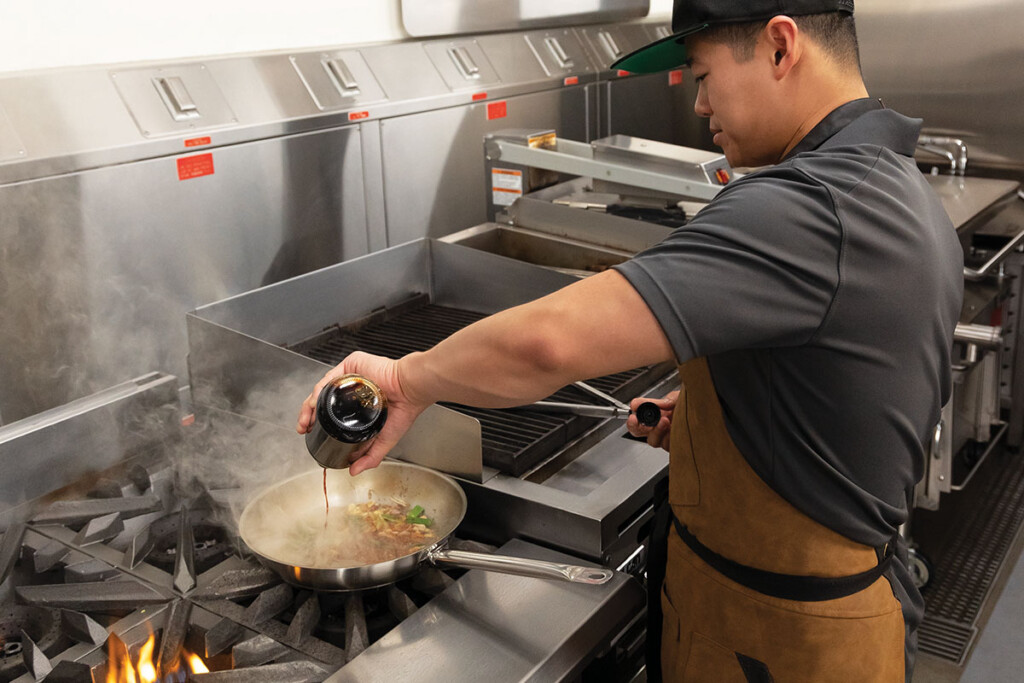
Put several standalone ranges next to each other, and you may not immediately spot the differences. It’s not wholly unlike looking at a line of sedans and seeing four wheels and four doors in succession. But as with cars, with ranges, it’s what’s under the hood, literally and figuratively, that counts, say manufacturers.
The latest ranges rolling off the line boast features to meet both growing customer interest in greener operations and operators’ need for greater product durability and flexibility—a key demand in kitchens facing a continued labor crunch and the challenges of dealing with what may be a less-experienced staff.
At the same time, these newer features—pilots that aren’t always on by default, heavier-duty doors, modular range tops—don’t trump the appeal of power, manufacturers know. (Customers’ continued focus on Btu counts for gas ranges boils down to a desire “to know I have the power if I need it,” says one manufacturer.) But, according to several manufacturers, picking the right model for your operation doesn’t come down to a single number, whether it’s a Btu count or the price tag. It’s vital to consider a changing regulatory environment and local energy trends, whether and how the operation’s menu may be changing, who’s handling kitchen cleaning/maintenance needs on a daily basis and even future plans for the operation itself.
Here’s what to look for if you’re eyeing a standalone range purchase.
Hybrid and electric-ignition ranges can help provide peace of mind from a safety perspective as well as providing the greater efficiency that sustainability-minded operators seek.
GREENER (AND POTENTIALLY SAFER) OPERATIONS
Standing pilots have long been the standard in foodservice, with operators drawn to the ease of always-on power, but today a growing number of operators are seeking out ranges with pilots that don’t stay lit 24/7. The change stems from growing concern about energy efficiency as well as safety issues that could arise when pilots are always on—but kitchens aren’t. Manufacturers have responded creatively with hybrid and electric- ignition models that can help provide peace of mind from a safety perspective as well as the greater efficiency that sustainability-minded operators seek.
If you’re opening a restaurant in a new-construction building (or an existing site undergoing extensive renovations) in an urban center, for example, having a range with pilots that don’t stay lit when the range isn’t in use can be a sustainability- minded move that supports meeting standards stipulated by certification programs such as LEED or WELL v2. For mixed-use buildings in particular, one manufacturer says, there’s a strong interest in going greener, as sustainable-building features can be a selling point for prospective residential tenants.
Then there’s the issue of some localities enacting laws or looking to transition away from gas power entirely. Berkley, Calif., in 2019, became one of the first U.S. cities to ban natural-gas hookups in new buildings, and a range of cities and municipalities across the country—from Seattle and Salt Lake City to Ithaca, N.Y.—are making similar moves, either advancing legislature banning gas hookups or supporting the transition to electric via financial incentives. (On the flip side, legislatures in states including Arizona, Oklahoma and Tennessee have preemptively banned natural-gas bans.)
Operators still in the market for gas-powered ranges may find units that don’t have an always-on pilot to be an appealing alternative to traditional models. From a safety perspective, too, they can be an appealing choice for those managing kitchens that don’t see daily or all-day use, such as schools, office buildings, golf clubs and houses of worship. One manufacturer says a common concern voiced by customers is that city crews may turn off gas lines at a time when no one is in their building and then turn them back on at a time when no one at the operation is around to light the pilot, leading to natural-gas leakage and a noxious gas smell whenever employees return to the kitchen.
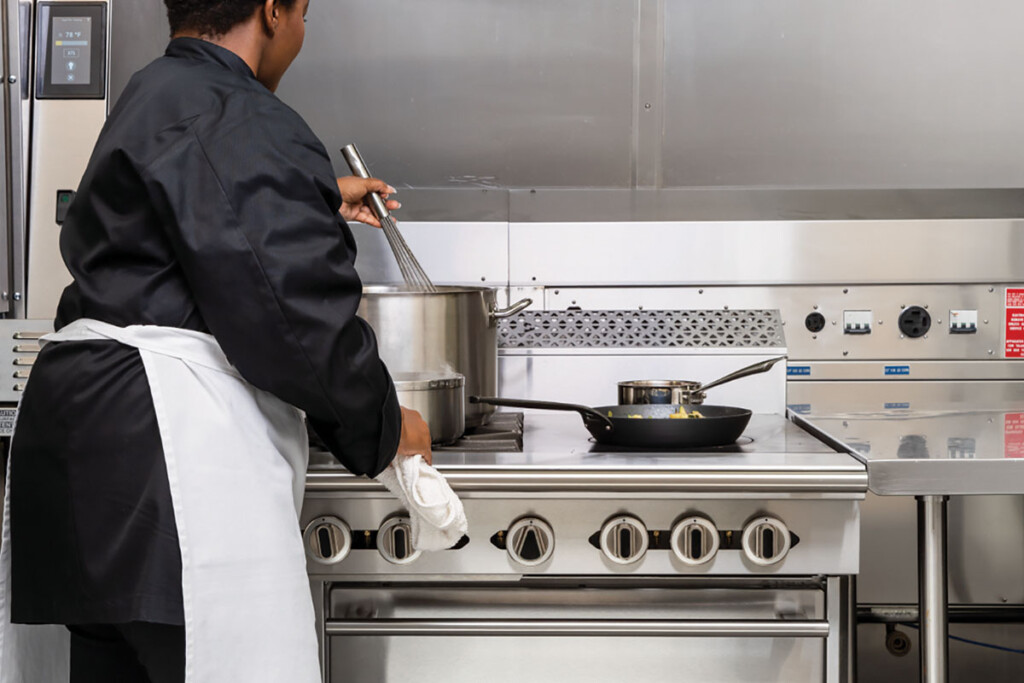
Range options abound, with open burners, griddles and French tops offered up top and convection or standard ovens as well as cabinet bases offered below. Courtesy of Garland.
Several manufacturers offer options designed to give operators more peace of mind when it comes to managing pilots and gas flow. One maker’s series, for example, offers electronic ignition as a safety, efficiency and ease-of-use feature; another’s ranges cease gas flow if a standing pilot is extinguished. Hybrid gas/ electric options are available, too, as at least one manufacturer offers an electric oven and gas-powered top.
MODULARITY AND CUSTOMIZABILITY
If 2020 put a fine point on the need for flexibility throughout an organization’s operations, the past two years have amplified calls for agility by design. When it comes to ranges, that looks like cooktops with components that can be swapped out easily as menus or the concept itself evolves.
Need a griddle top rather than open top burners? More models on the market today make that an uncomplicated switch. “That’s a really nice benefit if, say, you get a new chef in, or if you’re looking to sell your business,” says one manufacturer. “It makes it a lot more appealing that you don’t have to replace all of your equipment and can make swaps on different pieces to get what you want.”
Smaller and easier-to-maneuver components can support cleanability and maintainability, too, manufacturers point out. Multipiece grease drawers, for example, let chefs and other kitchen staff remove just one, smaller drawer if there’s a grease spill under a particular burner rather than having to remove a large, unwieldy, 36-inch standard grease drawer to clean it. That lets staff move and work more efficiently in the kitchen, and items that are less cumbersome to remove and to clean will get cleaned more frequently, helping to avoid the clogs and equipment failures responsible for the majority of service calls, say manufacturers.
Operators still in the market for gas-powered ranges may find units that don’t have an always-on pilot to be an appealing alternative to traditional models.
EASY CARE AND MADE-TO-LAST DURABILITY
Easy cleanability is among operators’ top asks, manufacturers say—especially in a labor market where competition for kitchen staff remains tight and those coming on board may be less-experienced and/or less-trained in basic kitchen operations and maintenance.
“In a kitchen, you’re looking to save as much money as possible, and if you have a piece of equipment that’s hard to clean or cumbersome to clean, it’ll never get cleaned,” one manufacturer says. That reality has led to innovations such as easier-to-remove, lift-off burner heads—and the aforementioned multipiece grease drawers.
Speaking of hard kitchen truths: “Doors on cooking equipment are the most abused part of any piece of equipment,” that maker continues. Conventional oven doors might get opened and shut 100 times in a day, with “opened” looking more like “thrown down,” and “shut” more often than not meaning “kicked closed.” (That’s not to mention the number of times they get stood on while a worker cleans a range hood.) So it’s wise to ask questions about oven-door durability—for example, how many z-brackets are supporting the door?—when you’re looking for a range that will be likely to reach its full potential life span.
Other frustration-busting features to watch for include burner boxes made of stainless versus aluminized steel (as the latter is vulnerable to deterioration from acid and water), and cast-iron components to better diffuse heat across the bottom of pots.
Restaurants run on such tight margins, one product specialist notes, that every seemingly small feature that can boost equipment efficiency or make it that much easier to clean and maintain a range on a daily basis can yield meaningful impacts on the operation’s bottom line and create a better working experience for staff.
That, in turn, can bolster a restaurant’s competitive positioning—for customers and for talent. For both operators and range manufacturers, then, it may hold true that, as one manufacturer quips, “What’s underneath that stainless steel is what sets you apart from the competition.”
Don’t Harp on Btus
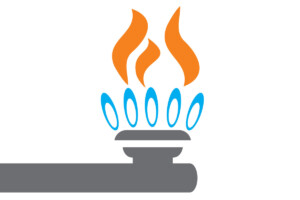 If there’s one thing that manufacturers would like operators not to obsess over when choosing a range, it’s Btus.
If there’s one thing that manufacturers would like operators not to obsess over when choosing a range, it’s Btus.
“Everybody thinks that more Btus is better,” one manufacturer says. “That’s really not the case.”
Another manufacturer agrees. “Most owner-operators tend to be fascinated or slightly enamored with a bigger Btu number,” they say. But Btu counts are a poor indicator of day-to- day performance capability. If an industry-standard cooktop burner on a 36-inch range is rated at 30,000 Btus, most operators, for most purposes, will only need half that heat most of the time. In addition, the manufacturer points out, if a chef is cranking up the heat, it’s often because the design of the unit itself doesn’t maximize use of the energy input.
The “campfire effect”—where a griddle top has a hot spot and then areas of lower heat toward the burner edges where food gets moved just to keep it warm—is what you don’t want to see in your range, he notes. “You should be able to use that entire surface,” the maker says. Range models that have bowls surrounding the burners can help distribute heat more evenly. Efficiency, durability and cleanability will go a lot further in helping both kitchen staff and operators deliver on a daily basis than a bigger Btu count, manufacturers agree.
Sixth Sense
Get a hold on six makers’ latest standalone ranges, with efficiency top of mind on some.
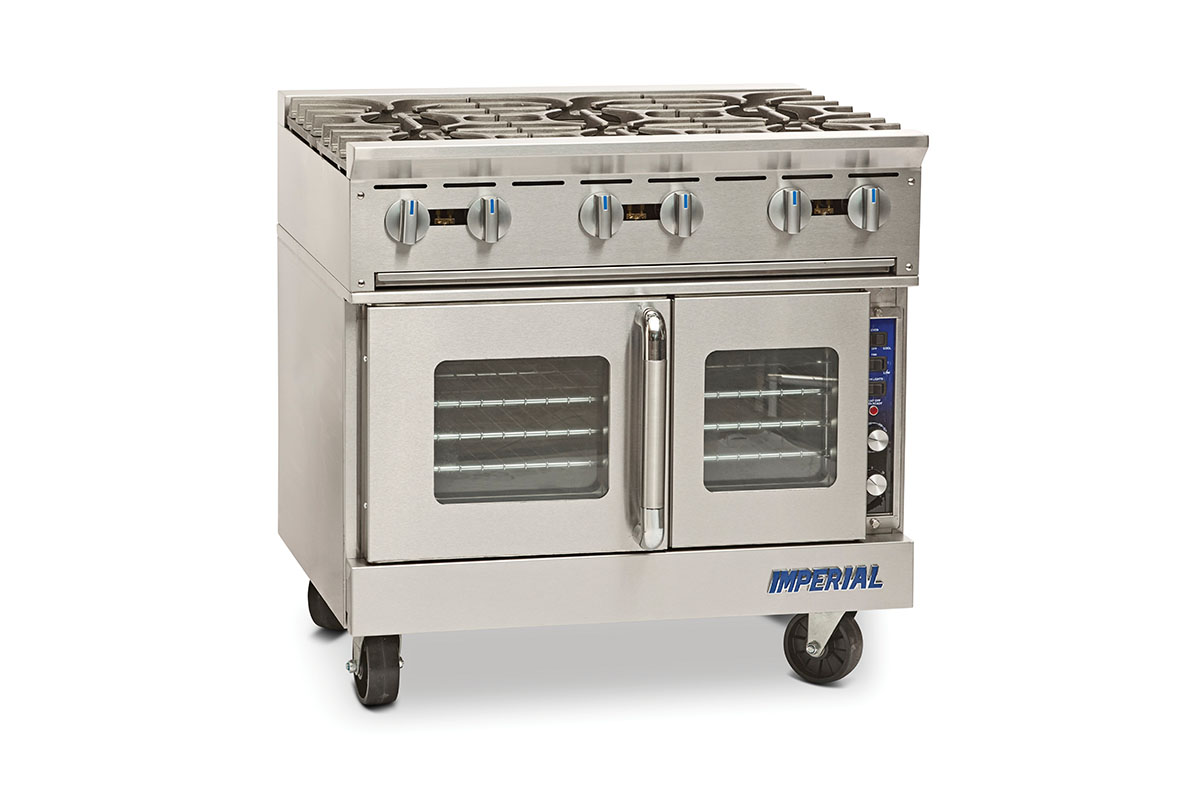
Imperial
MODEL: IR-6-P
FEATURES: This model, part of the Pro Series line, packs six open burners—with two rings of flames and a low-simmer feature—atop an oven with double glass doors. Grates, featuring a two-piece design, lift off with ease, and an anti-clogging shield helps protect the pilot from grease and debris.
WEBSITE: imperialrange.com
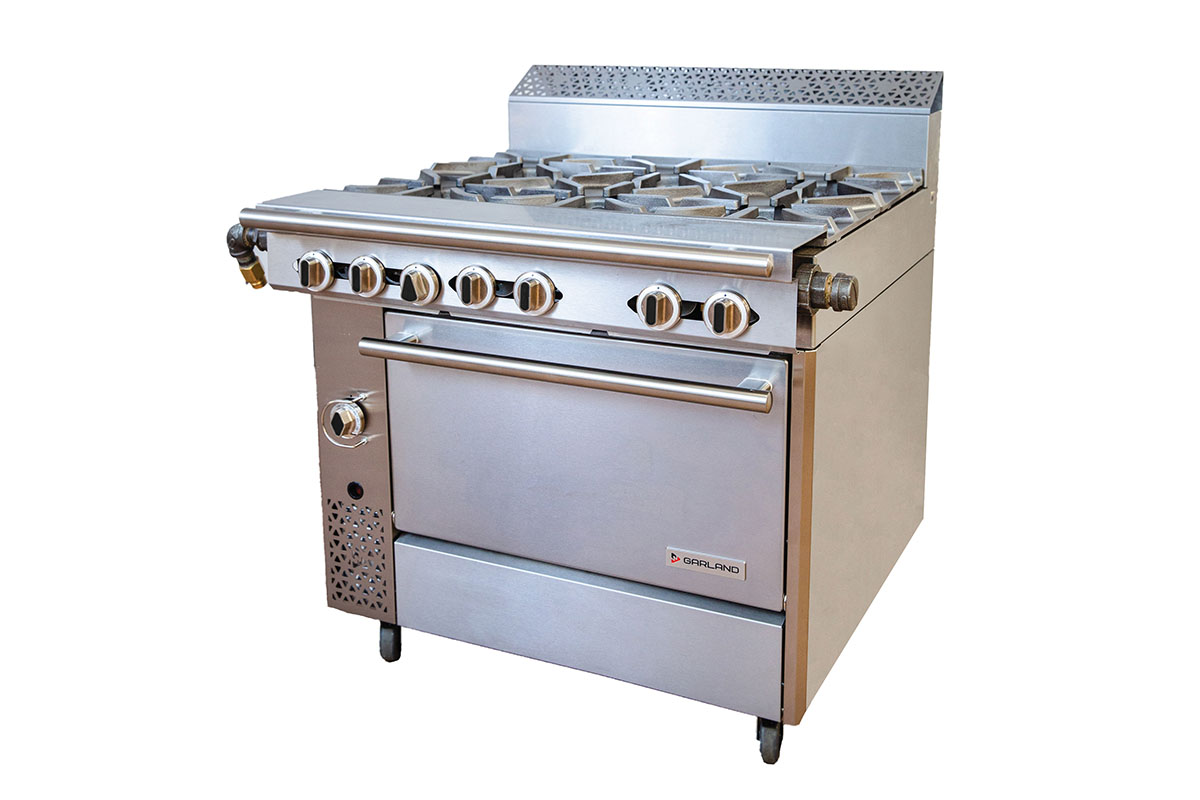
Garland
MODEL: C36-6R
FEATURES: This offering from Garland features six open burners atop a stainless body. Specify legs or casters, a porcelain or stainless oven interior, plus back and base options. This standard oven model has one chrome-plated rack, while the C36-6C, with a convection oven base, features three racks.
WEBSITE: garland-group.com
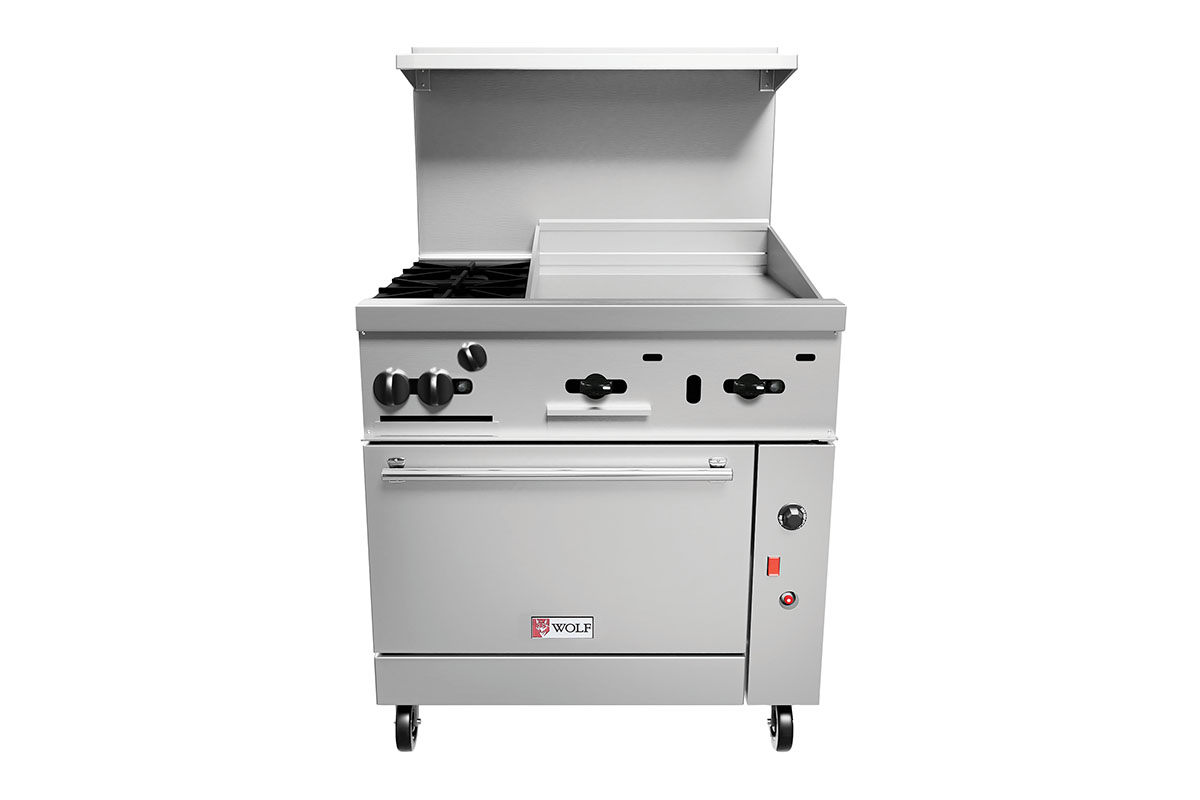
Wolf
MODEL: Challenger XL Series
FEATURES: Bake full-size sheet pans across two racks in this “XL” oven, outfitted with two burners plus a 24-in.W griddle on top. Save energy with an ignition system featuring one pilot per two burners. Choose from a convection or standard oven and natural gas or propane options.
WEBSITE: wolfequipment.com
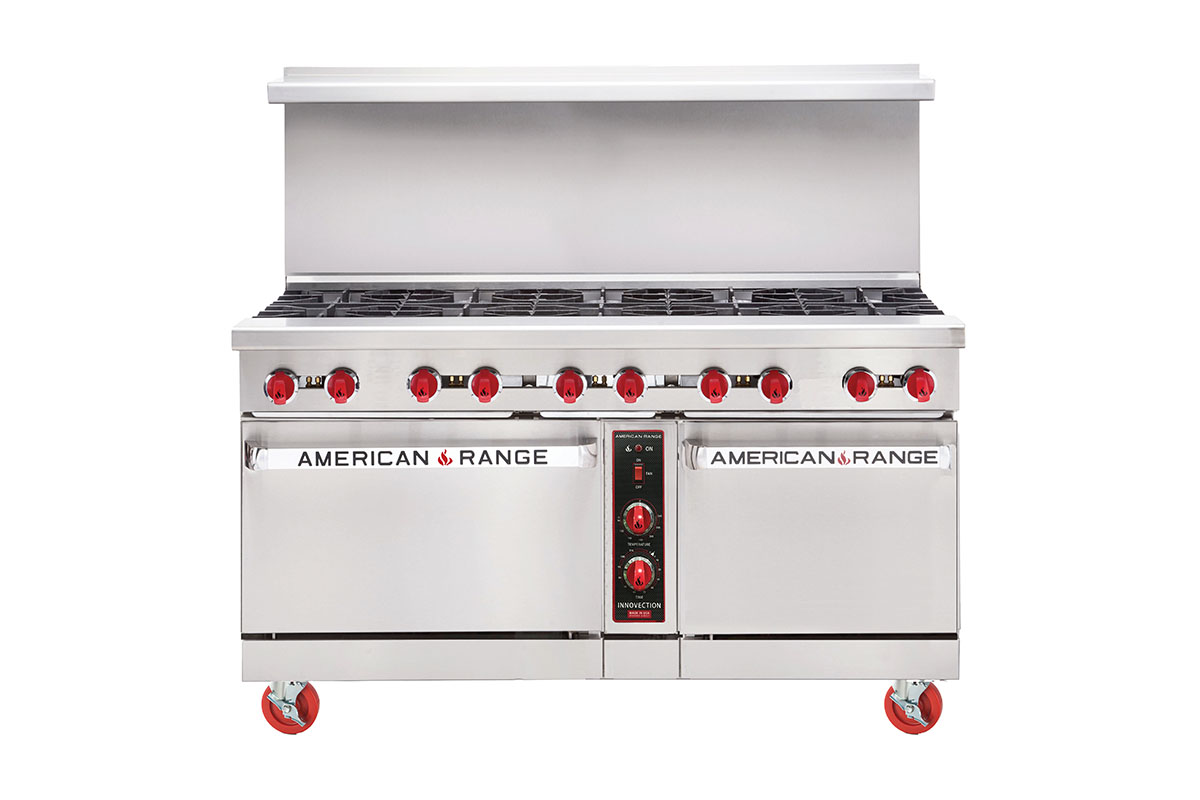
American Range
MODEL: ARGF-10
FEATURES: This gas model, part of the maker’s Green Flame series, features a pilotless burner electronic ignition system on all 10 burners for increased efficiency and dependability. Cleaning is simplified thanks to a stainless door and porcelain-coated oven walls. Casters (as pictured) are optional.
WEBSITE: americanrange.com
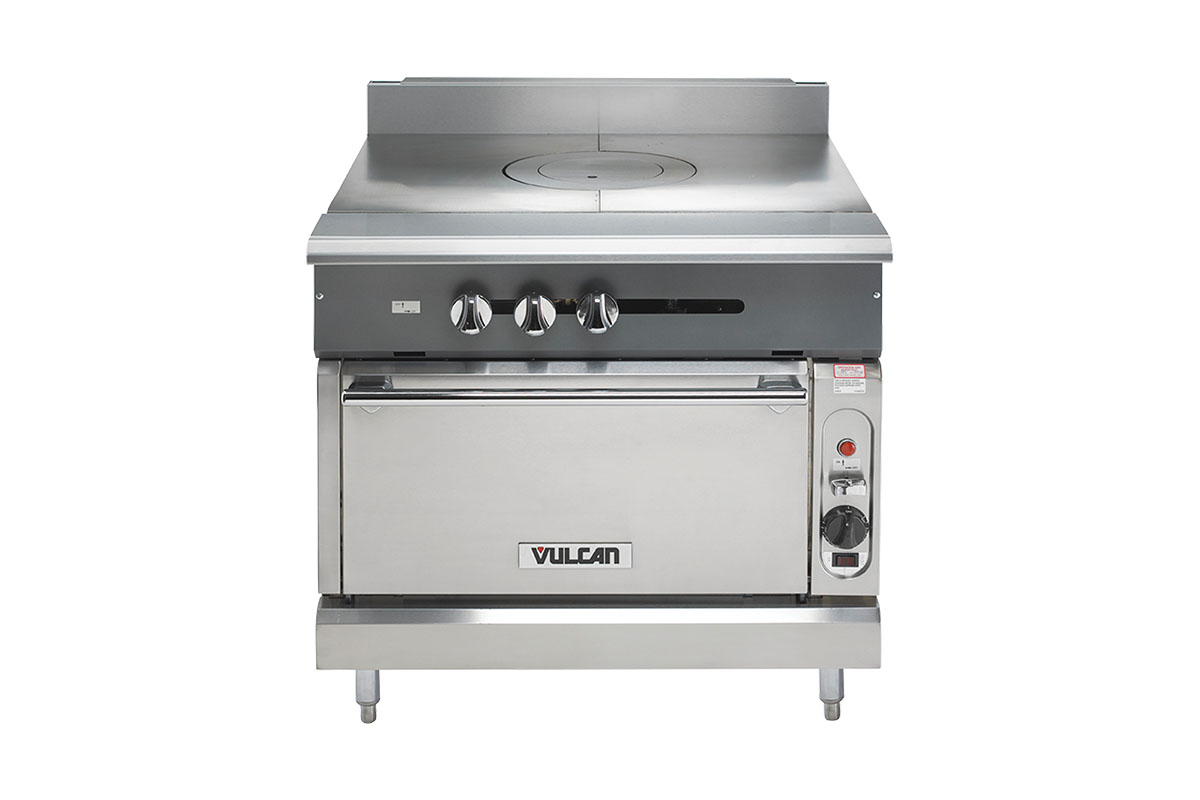
Vulcan
MODEL: V1FT36S
FEATURES: This modular gas range, with a cast iron French top, boasts individual controls for each of the three cast ring burners. Below, a standard oven with a heavy-duty door and porcelain interior contains one rack, with three positions. Convection or cabinet bases also are available.
WEBSITE: vulcanequipment.com
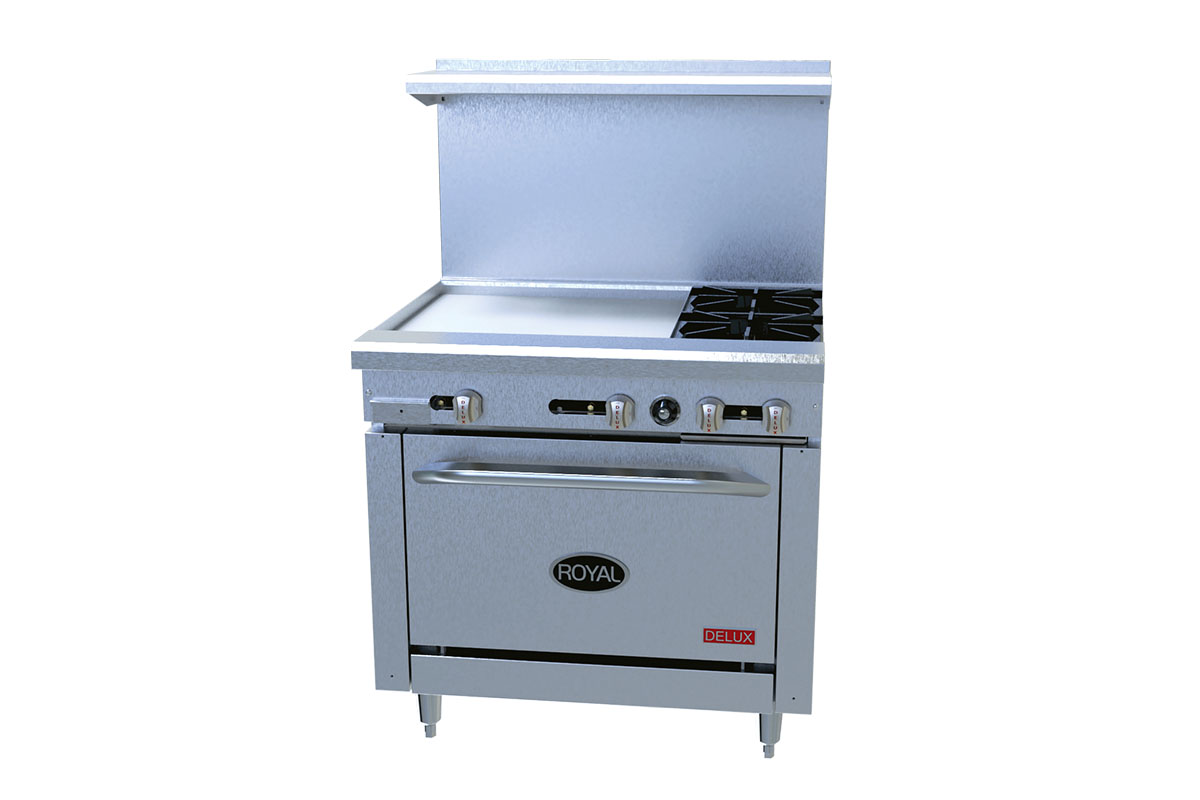
Royal Range of California
MODEL: RDR-2G24
FEATURES: Cook across two open burners and two griddle burners; the 24-in. griddle is standard on the left, but customizable. An all-welded frame, 1,200°F-limit insulation, and all stainless burner box and drip tray complete the unit. This model has a standard oven, but convection oven or cabinet bases also are available.
WEBSITE: royalranges.com
Editor’s note: All featured models have been introduced or updated since the 2016 National Restaurant Association Show.
RELATED CONTENT
- Advertisement -
- Advertisement -
- Advertisement -
TRENDING NOW
- Advertisement -
- Advertisement -
- Advertisement -

